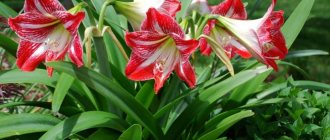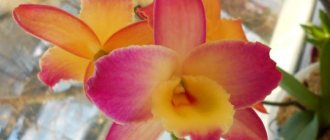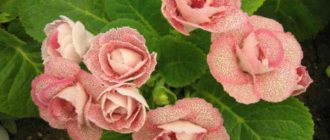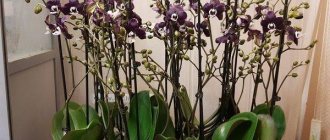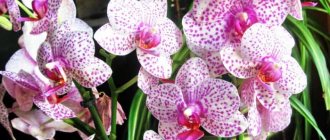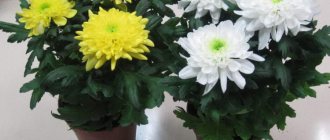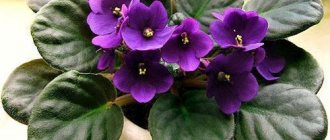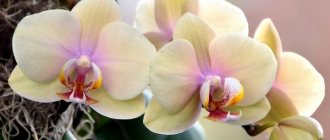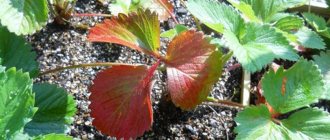Amaryllis is a magnificent unpretentious plant. Withstands cold, drafts and temperature changes .
Blooms brightly and colorfully. The shades are varied, depending on the subspecies. Flowers can be crimson, purple, snow-white and emerald.
The shape of the flowers is bell-shaped. Some subspecies have velvet flowers with pronounced strokes of a different shade. The USA is considered the birthplace of the magnificent Amaryllis .
Flowering plant
The dormant period can last until the end of May . After this, the bulbs lay flower buds. The plant blooms in late summer - early autumn. The plant grows an elongated peduncle.
It can reach more than 85 cm in length. At the top there is an inflorescence on which flowers are formed. If there are too many of them, they are arranged in two tiers. The inflorescence is in the form of an umbrella, the flowers are in the form of a funnel. They have 6 petals. They reach 7-11 cm in diameter. The pistil is elegant, thread-like. Stamens in the amount of 6 pieces.
You can clearly see how beautiful amaryllis blooms in the photo below:
Period
Amaryllis is a bulbous flower. After planting, it begins to actively grow and throw out flower stalks. After 1.5-2 months, 1-2 powerful peduncles appear on the bulbs. Each of them will have 5-7 magnificent flowers . To extend the flowering period, keep the container in cold rooms without direct sunlight.
Triple flowering of this representative of the flora greatly deteriorates the bulb and leaves it almost without the necessary microelements. After the first flower begins to bloom, it is recommended to cut off the peduncle immediately.
It is placed in boiled water. The water in the dishes is changed daily. The flowering period for cutting and flowering is identical. But by removing the peduncle, professional gardeners reduce or prevent the depletion of the bulb. Also, proper removal stimulates the growth of a new grower. After flowering, this representative of the flora must be provided with a period of rest .
How to properly care for a plant at home?
Let's talk about the conditions and care necessary for flowering.
Lighting
During growth - bright, diffuse. For normal development, a 16-hour day of light is required. It is better to place the plant on the windowsill of a window facing southwest or southeast. It is necessary to periodically turn the pot the other way, this will ensure the slender growth of the peduncle. The bulb does not need light during the dormant period.
Temperature
During active growth: during the day 20-22 ºC, at night at least 18ºC. For bulbs during rest, they need coolness, a minimum of 10 ºC and a maximum of 18 ºC. If the temperature is below optimal, the amaryllis will die. Exceeding will contribute to rapid germination, which will not provide complete rest.
Amaryllis needs a period of rest. It is not necessary to store it in a cold room; room temperature between 20 ºC and 22 ºC is sufficient. This way you can avoid unnecessary growth in winter. Caring for amaryllis in winter and storing the bulbs is discussed separately.
In the spring, the amaryllis will release a peduncle (read about the peduncle and structure of the amaryllis and the appearance of the flower here). In summer, it is better not to take the plant out of the room if the differences in day and night temperatures are significant.
Watering
During flowering, abundant watering is required. The top layer of soil should dry out a little before the next watering.
Important! Air humidity should not exceed 80%, otherwise the flower will be subject to fungal infection.
Water for irrigation should settle and be at room temperature. Do not allow water to get on the dormant bulb or open buds. After flowering, watering should be reduced and stopped after two months. After the dormant period, when the peduncle grows to 10 cm, you can switch to the normal watering mode, taking into account the conditions in the room (air humidity, temperature, dryness).
During the flowering period, if the room is too dry, you can spray the flowers and leaves.
The soil
The following soil composition is optimal:
- turf land (2 parts);
- sand (1 part);
- peat (1 part);
- humus (1 part).
The second option will ensure that excess water is removed into the pan:
- turf land (2 parts);
- leaf soil (2 parts);
- peat (1 part);
- humus (1 part);
- washed river sand (1 part).
The soil should be light and loose; a slightly acidic (pH 6.0-6.5) or neutral environment is required.
Fertilizer
It is optimal to feed (during the period of active growth and flowering) once every 10 days. Reduce fertilizing as soon as the plant has flowered and stop after the leaves wither. When the peduncle begins to grow (usually in spring), fertilizing is resumed.
Attention! For flowering amaryllis, liquid complex fertilizers or special formulations for bulbous plants are used.
How to make amaryllis bloom at home?
In order for amaryllis to bloom brightly and luxuriantly, it needs to create conditions similar to natural ones .
The flower grew in an arid area where rainfall is very rare. If a plant does not release an arrow for a long time, then it needs the correct dormant stage.
It is kept at a cool temperature and watering is kept to a minimum . If you alternate active growth with a period of rest, then Amaryllis can bloom 2 times a year. But you should not overuse the quantity, as this will greatly deplete the bulb. To make Amaryllis bloom, it is necessary to observe temperature conditions, lighting and systematic watering.
Common mistakes
The most common mistake is not observing the rest period or switching to it too abruptly. The plant must be prepared gradually. Sometimes the wrong place is chosen for a plant, the temperature regime is not observed, and it is planted in the wrong soil.
If you water too much, the roots may rot. Lack of moisture will not allow amaryllis to bloom and develop well. Some gardeners start watering when the arrow just hatches, and as a result they do not get flowering, the plant grows leaves.
Forcing
Experienced flower growers love this representative of the flora because flowering can be created at any desired period . But it is recommended to create a dormant period from the beginning of winter to mid-spring. This is the time that is considered the most optimal and natural for Amaryllis.
At this time, the bulbs are depleted much less and the loss of nutrients occurs with minimal losses. With proper care, the plant will bloom brightly and continuously. And in spring and summer, the planting material bulbs will be able to gain strength for the next season. On an industrial scale, flower forcing is carried out year-round.
How often does it bloom?
The plant has a pronounced period of complete dormancy, after which flowering is observed.
If we remember its origin, it becomes clear why it is observed in March - April.
At this time, the flower is in its homeland - late summer, autumn. When the end of spring comes and amaryllis rests for summer, winter has come for it.
Flowering time depends on the varietal of the flower and may occur at the end of winter or early spring. Some varieties bloom in summer or autumn.
If you organize forcing correctly, you can make amaryllis bloom at almost any desired time. But still, natural timing is preferable for this - the bulbs will be stronger, the plant itself will be healthier, and flowering will be annual and abundant. With proper care, re-blooming is possible in the same year.
Care after flowering
After the amaryllis has bloomed, the question often arises: what to do next? Here we will look at how to care for the plant after flowering.
At the beginning of autumn it is necessary to stop fertilizing . The number of waterings should be reduced to a minimum. At the end of October, watering is reduced completely. By that time, the plant will begin to actively shed its leaves.
Nutrients from the soil will move into the bulb. During this period, the flower will begin to prepare for the new flowering season.
The plant should be kept in a cool room at a temperature below 16°C . At the same time, the root system of the flower is preserved. The duration of the rest period should be 2-3 months. It is forbidden to leave the plant in the cold.
How to make it bloom?
Let's look at it step by step:
- It all starts with buying a bulb. It should be heavy, dense, not soft, without streaks or signs of rotting.
- Turn the onion upside down and place it in a bright place. Physiological processes will be activated, and after a week it can be placed in the soil.
- Prepare a suitable pot and fill it with drainage, sand and nutrients in the correct proportions mentioned above. Add bone meal or ash (1-2 teaspoons) as a phosphorus-rich fertilizer (necessary for flowering). If some roots have turned black or dried out, remove them. It is necessary to fill the onion by a third.
- Until the flower arrow (stem) grows 10 cm, water moderately. The peduncle is expelled in about 6-7 weeks. During active growth, watering should be done as the top layer of soil dries.
- Feeding once every 10 days.
Flowering lasts 20-30 days, during this period there is no need to fertilize. You can time the forcing to any date. For example, by March 8. Let's take into account that the plant's dormancy lasts 2-3 months, the arrow grows for 6-7 weeks, and flowering lasts about a month. This means that at the beginning of October the bulb must be removed to a cool, dark place.
The rest period can be triggered at the right time. Lightly twist the leaves into a rope (2 turns) and place them on the edge of the pot. They will begin to turn yellow and dry out. When the leaves become brittle, separate them from the peduncle.
We offer a video on how to make amaryllis bloom?:
Main difficulties
In order for the arrow of the plant to begin to actively grow from the rosette of leaves, light and thermal conditions must be observed.
This representative of the flora is very light-loving . Prefers warmth. The optimal temperature for the plant varies from 19 to 24°C.
Therefore, if the flower is not provided with such conditions, it will begin to wither and drop its buds. For the formation of a large peduncle, bright natural light is required . When releasing an arrow of a peduncle, Amaryllis needs special watering. It should be moderate.
It is necessary to wait until the top layer of soil dries. It is also necessary to spray the flower with water from a spray bottle . During the period of active growth, the plant is fed. Fertilizers for home flowers are suitable for this. After flowering and falling of the peduncle, fertilizing must be stopped.
Growing container
The pot must be narrow and tall. It is very easy to understand whether the width of the pot will fit or not. If two fingers fit between the walls and the bulb, then the width is sufficient. It is worth remembering that amaryllis has a fairly heavy peduncle and large flowers, so the container in which it is grown must be stable. If the pot is too spacious, then young shoots will begin to appear intensively in it. Therefore, it is better to choose a cramped space for this plant, in which an adult flower will begin to bloom much faster.
What to do if it doesn't bloom?
Let's try to figure out why amaryllis may not bloom at home. If this happens, then it is necessary to check the planting material. When planting, the bulbs are cleaned of dried scales . If sprouts begin to sprout on it, they are removed with a special knife. For one bulb, select a container with a diameter not exceeding 16-18 cm.
Another reason why amaryllis does not bloom at home may be that the pot is too large. The plant will devote all its strength to filling the container with its root system. In this case, flowering may not occur. A third of the bulb is left on the surface of the soil.
Diseases and pests
Amaryllis leaves begin to turn yellow when they are attacked by aphids. The plant suffers from thrips. These insects feed on the sap of buds and petals, forming voids. The appearance of pests causes pollen to fall off and yellow spots to form on flowers.
The danger to the plant comes from spider mites and the narcissus fly. To cope with insects, amaryllis is sprayed with fungicides.
With excess moisture, exotic crops are affected by rot. Reducing watering helps solve the problem.
Red burns are caused by daytime sun rays. A little shade can help prevent the disease.
Now you know how to make amaryllis bloom at home. We wish you success and beautiful flowers on your windowsills!
Useful video
Briefly, the basic rules for successfully growing amaryllis:
If you find an error, please select a piece of text and press Ctrl+Enter.
In the 18th century, amaryllis bulbs first appeared in Europe. Today this flower is very popular, and fame did not come to it gradually - the plant, brought by sailors, quickly fell in love with gardeners and flower growers. To this day, amaryllis attracts those who love bright, even somewhat extravagant plants. But an inexperienced gardener may refuse to grow the crop, considering it too capricious. A common problem is amaryllis not blooming.
Read also: Cabbage three heroes description reviews
Suitable soil
If the right pot has been selected, watering and fertilizing are carried out regularly, a dormant period is observed, but the amaryllis still does not bloom, what should I do? You need to choose the right substrate. Many people prefer to buy ready-made soil in the store. You can also prepare the soil at home. To do this, you need to mix one part of turf soil, one part of humus with two parts of river sand. All this is thoroughly mixed and placed in a well-heated oven for 10-15 minutes to disinfect the soil. Before pouring soil into the pot, it is necessary to lay about 3 centimeters of drainage at the bottom; for this you can use pebbles or expanded clay. Thanks to drainage, the amaryllis roots will not rot.
Comfortable conditions
This is the basic requirement of a flower. If you don’t take care of it according to all the rules, then you really won’t get any gorgeous flowers.
What are these rules?
- As soon as the peduncle has formed and the last flower has been tied, we must not forget about watering the crop. When the top soil layer dries out, it is important to water the amaryllis and give it a combined feeding twice a month.
- There is an interval between flowering and the formation of leaves - it is used for transplanting bulbs and separating children from them.
- It is recommended to reduce watering when foliage grows. When the leaves die, watering ends.
- The dormant period for the flower is marked by a temperature of +9. And it cannot be increased until the culture again shows signs of growth.
If your amaryllis has stopped blooming, make sure you are caring for it correctly. Please note that under natural conditions, a soil mixture that includes two shares of peat, two shares of loam, and one share of sand/perlite is suitable for the crop. A glass of bone meal is added to 6 liters of this mixture.
When planting the bulb, a significant part of it should be left above the soil. Amaryllis will not tolerate hyperhydration, but it can cope with drought.
Watering and fertilizing
After flowering, the plant weakens and enters a dormant period to restore strength. Around the end of summer, the flower recovers and comes to life again. You should not yawn at this time: you need to move the plant into a warm place and plant it in fertile soil.
With the end of the dormant period, regular care procedures should begin: watering and fertilizing. However, you should not be too zealous: amaryllis can be equally harmed by both lack of care and its excess. If you overdo it with fertilizing, the plant may grow only leaves, but will not be in a hurry to bloom.
What to do
If amaryllis refuses to bloom due to an excess of minerals in the soil, there is no other choice but to transplant it into clean soil.
Watering must be approached with caution: initially water in small portions, and as the peduncle grows, increase the volume of water.
Why are there no flowers?
The reason for the lack of bud formation lies in the violation of the natural order, i.e., in non-compliance with flowering conditions. Among them:
placing the crop in a place with insufficient temperature and humidity; deepening the bulb during planting; planting in a dense substrate that will not allow the root system to grow.
Moving it out of the shade will also help make amaryllis bloom. Sometimes it’s enough just to change the window sill or room. If the plant does not have enough light for a long time, the number of buds will decrease.
Also, at home, amaryllis may stop flowering if the bulb is frozen. A small exposure to sub-zero temperatures is enough to have an adverse effect on the bulb.
Another potential reason is exhaustion due to an excessive number of babies that the grower did not separate in time.
No recovery
What to do if there is no flowering?
Perhaps you have not adapted to the amaryllis cycle and are not aware of the recovery period. When the inflorescences wither and leaves appear, bulbous plants usually stock up on new strength. And this is done not only due to the nutrient soil components, but also due to the process of photosynthesis, which is organized by the leaves. This period is significant for amaryllis.
For optimal flowering, the crop goes through a full annual cycle. Experts recommend not cutting off the foliage if it has wilted a little, but to wait for it to naturally wilt—naturally dry out and die.
But it happens that even experienced flower growers are surprised by the lack of buds. “Last year,” they assure, “the amaryllis bloomed, but this year it only produces leaves.” Let's figure it out: usually an adult bulb produces only one peduncle. And when two strong inflorescences have developed above the soil, this can become an excessive burden for amaryllis. This means that the bulb, which worked fruitfully last season, was unable to recover and “skips” the new flowering cycle. Amaryllis repeat this path of “forced vacation” of other bulbous plants.
Young plants
By the way, perhaps your plant is still too young. If it is less than 3-6 years old, it may not have enough resources to develop buds. At home, such “young” plants do not go into hibernation, so they are kept warm all year round, fed and watered. And if the bulb receives proper care, if the owner does not forget to feed and water it, then there is no need to worry about flowering.
Inappropriate potty
It could also be the container for the flower. It should be tall and narrow. The right choice can be made this way: if two fingers fit between the onion and the walls of the pot, then this is a sufficient width. The stability of the flowerpot is also important, because the plant has a heavy peduncle and the flowers are also large.
If you prefer a more spacious flowerpot, then keep in mind that new shoots quickly appear in it, and this is not always good. Amaryllis suits a cramped space - it will flower faster.
Weak bulb
If the bulb is still young or simply weak, the flowers may also not appear. After the bush blooms, the bulb actively gains strength, it accumulates nutrients and useful components. The larger the bulb, the higher the chances that the new season for amaryllis will be successful.
Choose for planting only a healthy onion with a diameter of 8–10 cm. If you notice deformed roots (shrunken and rotten) on the onion, they should be removed.
Important! Young plants bloom after three years. If you grow amaryllis from seeds, then you should expect flowers in five to seven years.
Why doesn't amaryllis bloom?
Most often, problems with the release of flower stalks arise due to non-compliance with plant care recommendations.
Young plants
The long-awaited peduncle on the plant appears only after reaching three years of age . If a “baby” plant is planted, then there is no need to wait for flowering in the next 3 years until the bulb gets stronger.
Failure to comply with the rest period
The dormant period is a very important component of the life cycle of any plant, especially for flowering varieties.
If the amaryllis did not receive rest in the winter: it was fertilized, the frequency of watering was not reduced, or it was not removed from the light into a dark place, then you should not expect flowering in the prescribed time frame.
Wrong potty
Choosing a flowerpot is an important step in the formation of a healthy plant. The main selection criterion is the diameter of the container. The pot should freely accommodate the amaryllis bulb, but should not be too spacious .
If the pot is significantly larger than the size of the bulb, the plant will actively begin to form “babies” and produce greenery, but you are unlikely to see flower stalks.
Attention! When choosing a pot, you can use the golden rule: the diameter of the pot should not exceed the diameter of the bulb by more than 4 cm.
Incorrect watering frequency
This is one of the main reasons for the lack of flowers on amaryllis. Be sure to observe a dormant period and stop watering during this time . It is permissible to slightly moisten the soil with a spray bottle.
But even after moving the pot with the bulb from a dark place back to the windowsill, watering is not immediately resumed, continuing to spray the ground.
Attention! Regular watering is resumed only after the bulb shoots out an arrow of at least 10 cm.
Poorly selected soil
A heavy, poor substrate that interferes with gas exchange negatively affects the condition of the plant. When all forces are directed towards survival, buds are out of the question.
To flower, the plant requires a lot of strength and energy. Soil rich in microelements, with high gas permeability, and loose helps ensure this .
Substrates made from a mixture of leaf soil and humus are best suited for amaryllis . To increase the looseness of the soil, it is possible to add a small amount of perlite or coarse river sand.
Attention! The flower is adversely affected by high acidity of the soil. It is optimal to maintain the acidity index within 6.5 pH.
Poorly chosen place for a flower
Uncomfortable conditions can inhibit the appearance of corollas indefinitely. Have a bad effect on the condition of the flower:
- constant drafts;
- direct sunlight;
- too dense shadow or excessive shading;
- sudden changes in temperature.
Problems with the bulb
When choosing planting material, you need to pay attention to the condition of the bulb. Signs of a healthy plant:
- has no signs of mechanical damage;
- there are no signs of disease development;
- The bulb is smooth, medium in size.
But even the highest quality planting material will mature sufficiently to produce flower stalks only in the 3rd year .
Problems with fertilizer
If amaryllis does not need additional feeding during dormancy, then it should be fed regularly during the growing season.
You can select special complexes for bulbous plants or apply potassium-phosphorus fertilizers in accordance with the instructions.
Extending flowering
In order for amaryllis to bloom longer, it is recommended to place the flowerpot in a cool place. There he is not afraid of ultraviolet radiation. After blooming, the bud and peduncle must be cut off and placed in a vase. Chronologically, the flowering of amaryllis in a vase is equal to the flowering on the bulb. Usually, pruning the initial inflorescence stimulates the crop to produce a new arrow.
There is an alternative way. When the buds begin to open, use tweezers to carefully remove the yellow anthers from the plant. And you need to do this before the pollen falls off.
It is also important whether the grower acts correctly after the amaryllis flowers wither. In September, stop feeding the crop. It should be watered minimally; in October, watering stops completely. Usually at this time the crop actively sheds its leaves. Nutrients are sent to the bulb, and this period is the beginning of preparation for flowering.
Don't forget about all the bulb care items. The matter requires experience and dexterity. Beginning flower growers may not know that in winter amaryllis can “sleep” not only in a pot, but also in a box with sawdust, and that at the end of the first month of winter the plant needs to be awakened: this is done by high-quality watering (warm water is used).
What difficulties are possible?
The owner himself does not always notice that the conditions important for growing the crop have changed. The temperature regime cannot exceed 24 degrees. But even during the flowering period it should not fall below 19 degrees. Without such conditions, amaryllis may weaken and drop its buds.
Pay attention to whether the flower has enough lighting. Bright natural light is an important and necessary condition for good flowering. If it’s a little gloomy outside your window, you need to look for options.
And one more point: during the watering period, some gardeners do it incompletely, as a result of which the top layer of soil may remain dry. Be sure to spray the flower with warm water from a spray bottle.
Read also: Biping at what temperature
Amaryllis is a beautiful plant; during the flowering period it has no equal. It looks perfect in a gift bouquet, or simply as an interior decoration. Therefore, careful care and some capriciousness are a tribute equivalent to luxurious flowering. When purchasing amaryllis, be prepared to study information about it - the flower will not survive if the grower is not “armed” with knowledge.
You can watch the video below about planting amaryllis.
Amaryllis is an ornamental flowering crop, born in South Africa, which has been popular among domestic florists and gardeners for many years. Even a novice gardener can grow amaryllis, since the flower feels good at home and is not particularly whimsical, and caring for it does not take much time and effort.
The genus Amaryllis is monotypic and is represented by only one plant species. However, the flower is quite often confused with representatives of the genus Hippeastrum, mistakenly classifying them as a variety of amaryllis. But, despite all the external similarity of these plants, they cannot be attributed to the same genus. Dense amaryllis flowers exude a rather pleasant subtle aroma, in contrast to the hollow buds of hippeastrum.
Proper content of amaryllis
So, if amaryllis is given normal care at home, why doesn’t it bloom? Here are the factors that need to be considered for the full development of amaryllis:
- Lighting. This plant can and should be placed where there is bright sunlight. If there is not enough natural light, you need to take care of artificial lighting. If the flower is in a south-facing window, shade will be required from noon to three in the afternoon during the summer months.
- Humidity. Amaryllis does not like wet areas. You should not flood the plant and allow water to stagnate; in addition, you need to water closer to the edge of the pot and make sure that water does not get on the neck of the bulb and leaves. Spraying is also not allowed.
- Temperature. When forcing and flowering indoors, the temperature should be within 19-24 degrees Celsius; it is not advisable to go beyond this range. Water for irrigation must be warm, at room temperature.
- Feeding. Approximately once every two weeks, throughout the growing season, the plant needs mineral fertilizers; complex fertilizers are suitable for flowering plants.
- Rest period. It is not advisable to “wake up” the plant earlier than after 3 months of rest. Ideally, it should spend 5 months at rest.
An analysis of the actual conditions of detention will help to understand where the mistake was made. After this, you will need to adjust your attitude towards the flower, and next year the amaryllis will probably bloom.
In general, amaryllis cannot be called completely unpretentious, but the flower does not require anything overly complex. If you take care of it, following the recommendations given above, you can get a beautiful and stylish living decoration for your home.
Characteristics of amaryllis and species diversity
Amaryllis is a monotypic genus of perennial bulbous plants belonging to the Amaryllidaceae family. The only representative of the genus is Amaryllis belladonna, or Beautiful. The underground part of the plant is represented by a pear-shaped bulb consisting of a large number of scales. The diameter of the bulb can range from 6 to 12 cm. Fibrous roots are located on the bottom of the bulb.
The dense and narrow leaf plates of the flower are arranged in 2 rows, growing directly from the bulb. The length of the rich green leaves can reach half a meter, while their width rarely reaches even 2.5 cm. A smooth peduncle, represented by a bare stem, grows from the center of the bulb. As you can see in the photo, one peduncle can bear from 2 to 11 funnel-shaped buds, consisting of 6 elongated petals.
The diameter of the flowers can reach 12 cm. In their natural habitat, you can find amaryllis with white or pink flowers, which exude a pleasant, unobtrusive aroma. However, thanks to the hard work of breeders, several varieties with a wide variety of colors were developed based on Amaryllis the Beautiful.
The most popular varieties of amaryllis include:
- Durban. This variety is distinguished by large red inflorescences with whitish streaks at the base.
Durban Parker. Amaryllis Parker petals are bright pink, but have a yellow throat at the base.
Parker Terry nymph. The variety stands out for its double flowers, painted in a soft pink color.
Snow Queen Red Lion. It is one of the most popular amaryllis varieties. During flowering, medium-sized, rich red buds appear on the leathery peduncles.
red lion
There are many varieties of amaryllis, which differ from each other not only in the color of the flowers, but also in their shape. Breeders are trying to develop as many interesting varieties with large, variegated flowers as possible.
Caring for amaryllis at home, secrets and difficulties
Caring for amaryllis is not difficult; following the basic recommendations of agricultural technology will allow every gardener to grow a healthy flowering plant at home.
Lighting
Amaryllis is a light-loving ornamental crop that needs good lighting. However, direct sunlight should not be allowed to hit the ground part of the flower, as this can cause burns.
The flower has a pronounced dormant period, which lasts from December to April, at which point only its underground part remains of the plant. The bulb does not need lighting, so during the sleep period it is recommended to move the plant to a dark place.
Temperature and humidity
The average room temperature in the range of 18-25 °C is optimal for keeping the flower. After the inflorescences appear, the plant can be placed in a room in which the temperature does not rise above 20 °C. This manipulation will extend the flowering period. Average air humidity levels are quite suitable for growing amaryllis.
You should not place the plant next to heating devices that dry out the air in the room.
It is also not recommended to spray the foliage of the flower; it is enough to periodically wipe with a damp soft cloth. In case of extreme heat, you can place a tray filled with wet expanded clay nearby. After dropping the leaves, it is recommended to place the pot with the bulb in a cool and dry room, the air temperature in which is between 10-12 °C.
Watering and fertilizing
During the active growing season, the plant needs uniform, regular watering. The earthen ball should always remain slightly moist. For irrigation, it is recommended to use soft water at room temperature. It is best to water through a tray, since getting a large amount of moisture on the bulb can lead to its rotting.
In spring and summer, the flower needs additional nutrients. It is recommended to use liquid fertilizers for bulbous plants as fertilizing. The product must be applied once every 10-14 days.
Trimming and pinching
Many gardeners mistakenly believe that flower stalks need to be cut off immediately after the flowers die. In fact, pruning can only be done after the peduncle changes its green color to yellow and loses its density.
This late pruning allows the bulb to absorb all the nutrients contained in the leaf blades and peduncle of the plant. By trimming the arrow during the blooming of the first bud, you can stimulate the appearance of a new one. The cut arrow can be placed in a container with water, where it will delight with its flowering for 2 to 3 weeks.
Preparing for winter
Flowering depletes the plant and takes a lot of energy, which is later restored by the period of sleep. The absence of a normal dormant period interferes with the growth of the plant and negatively affects the quality of its flowering. A depleted bulb is the main reason for the lack of flower stalks.
In order to prepare the plant for winter, after flowering it is necessary to reduce the frequency and abundance of watering. There is no need to fertilize the plant at this time. After the peduncle and leaves have completely withered, they must be completely cut off, leaving only the bulb in the pot. The container with the onion must be placed in a cool, dry place. While hibernating, the bulb does not need lighting.
Read also: How to properly store gloxinia in winter
Diseases and pests
Improper care reduces the protective function of the flower and leads to the appearance of various diseases and pest attacks:
- Excessive watering and too humid air in the room can cause the plant to become infected with fusarium. The disease leads to rotting of the bulb, which manifests itself in the form of wilting and yellowing of the leaves. Removing rotten areas and treating with antifungal drugs will help the plant cope with the disease. After treatment, the flower must be transplanted into new soil.
Fusarium
- The appearance of brown streaks on the leaves indicates that the flower is affected by anthracnose. Treatment of the disease includes treatment with antifungal drugs and transplantation into fresh soil.
- The plant is also susceptible to attack by various harmful insects, namely onion mites, false scale insects and scale insects. You can get rid of false scale insects and scale insects by treating the soil with insecticides; acaricides are needed to combat mites.
Amaryllis flowering conditions
Sometimes, despite all efforts, amaryllis never blooms. To understand the reason for the failure, let’s consider all the necessary conditions for flowering. Experienced gardeners have long known that for a plant to successfully grow, conditions are necessary that are close to those found in its natural habitat.
Temperature
In the Cape Province, where amaryllis comes from, summers are hot and winters are quite cool. During the active growing season, the flower needs temperatures from 18 to 25 degrees. The difference between day and night temperatures should be minimal. When he is at rest, the temperature needs to be lowered.
Important! The minimum temperature for amaryllis at rest is +10 degrees.
Air humidity
When it is above 80%, the spread of the fungal disease stagonosporosis is possible. Therefore, the flower does not need additional air humidification. Only in extreme heat may it require spraying, but only in the morning or evening hours.
Lighting
Daylight hours during active growth are 16 hours. If necessary, use additional lighting. For a flower, bright but diffused light is preferable. It can be exposed to direct sunlight only in the morning - until 11 o'clock and in the afternoon - from 15 o'clock. At rest, amaryllis does not require light.
Location
It is chosen taking into account lighting needs. It is best if it is a window oriented to the southwest or southeast. On a south window, the flower will have to be shaded during the midday hours.
Important! To prevent the peduncle from bending, turn the pot three times a week.
Plant care during and after flowering
Under optimal conditions, amaryllis blooms within 2-3 months after planting the bulb, and a healthy bulb can maintain flowering for up to 3 weeks in a row. A flowering plant requires more careful care, since the appearance of a peduncle and the maintenance of flowering takes a lot of energy:
- The flower needs regular, abundant watering and good lighting, otherwise its buds will be faded and wither fairly quickly. However, moisture should not be allowed to get on the inflorescences, so it is best to water through a tray.
Regular application of fertilizing every 14 days will also have a beneficial effect on the duration of flowering and will not allow the bulb to become depleted.
In addition, the cut inflorescence will bloom even if it is in a container of water.
Care during flowering
The average flowering time for amaryllis is about 20 days. , experienced flower growers advise cutting off the first arrow of the peduncle as soon as the bud opens .
It will feel great in a vase with water and can last for about a week without wilting. After this procedure, the second peduncle will produce more corollas.
But it is better to remove the third arrow immediately , without allowing it to develop, since the removal of the third peduncle seriously depletes the bulb: by next year, the amaryllis may not have time to gain strength.
View this post on Instagram
Posted by Katyatka (@instkaterja) May 13, 2021 at 8:33 PDT
Important! During flowering, the number of waterings is in no way reduced, the flower is not sprayed, and its location is not changed.
Why does amaryllis not bloom, but only produce leaves?
Quite often, flower growers are faced with a problem when their amaryllis does not bloom, but, although looking healthy and developing normally, only produces leaves. The main reason that the plant does not form flower stalks is improper care and unsuitable conditions.
It is important to familiarize yourself with common mistakes that lead to lack of flowering and how to correct them:
| Cause | Solution |
| Bad light | Move the crop to a brighter area. An excellent choice would be eastern or western window sills. |
| Lack of nutrients in the soil | Do not forget to feed the soil with liquid fertilizers for bulbous ornamental crops. |
| Dense soil that prevents normal root growth | Transplant the bulb into a looser earthen substrate. |
| Low room temperature, which inhibits crop growth | Keep the flower in a room where the air temperature does not fall below 20 °C. |
| A small pot, the entire space of which was filled with bulbous children. | Plant the young bulbs in separate containers. |
| The onion was not provided with rest | Allow the bulb to rest by placing it in a cool, dark place. |
| The bulb is too deep in the soil | Replant the bulb, following all planting rules. |
| The plant is affected by diseases or pests | Regularly inspect the crop for diseases and pests. |
Answers on questions
Many gardeners often have questions about flower care. Let's try to answer the most frequently asked questions.
Why doesn't it bloom, but only produces leaves?
There may be several reasons:
- a baby was planted that blooms only after 3 years;
- too spacious pot or deep planting;
- the rest period is not observed;
- watering the flower before the arrow has grown to 10 cm;
- improper watering, light or temperature conditions;
- lack of nutrition.
What to do with the bulb after flowering?
If there is a need, it can be transplanted. Continue care until the leaves wither.
What to do with the arrow after flowering?
When it begins to wither, it is cut off.
Is it possible to replant a flowering one after purchase?
It is better to wait until flowering ends. The soil of the purchased flower does not absorb moisture well, so you need to pay special attention to watering.
